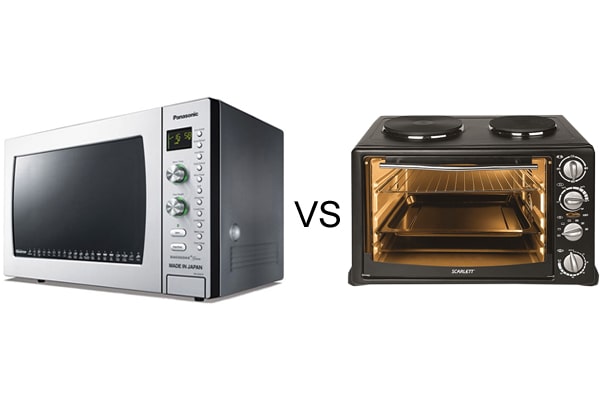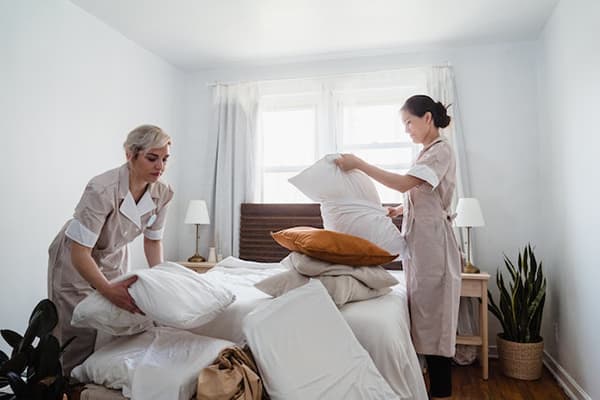When furnishing your living space, you might wonder whether to refer to your comfy seating as a “couch” or a “sofa.” While these terms are often used interchangeably, there are subtle differences in their origins, design, and usage that can help you make a more informed choice. This guide explores the distinctions between couches and sofas, providing insights into their historical backgrounds, structural features, and ideal settings.
What Is a Sofa?
Definition and Origins
A sofa is traditionally defined as a long, upholstered seat with arms and a back, designed to comfortably seat two or more people. The term “sofa” originates from the Arabic word “suffah,” meaning a bench covered with cushions and rugs. This piece of furniture made its way to Europe in the 17th century and became popular as a formal seating option.
Key Features
- Structure: Sofas typically have a well-defined structure with both arms and a backrest. They often feature a uniform, cushioned seating area.
- Formality: Sofas are generally considered more formal than couches, often used in living rooms, parlors, or formal sitting areas.
- Design: Sofas come in various styles, including traditional, contemporary, and modern designs. They may also include features like tufting, skirts, or decorative legs.
- Functionality: While primarily designed for seating, some sofas can convert into beds or include reclining features.
Applications
- Formal Living Rooms: Sofas are commonly placed in formal living rooms where they serve as a centerpiece for social gatherings.
- Office Spaces: In professional settings, sofas provide a stylish and comfortable seating option for reception areas or executive offices.
Examples of Sofas
- Sectional Sofa: Comprising multiple sections that can be arranged in various configurations.
- Chesterfield Sofa: Known for its deep button tufting and rolled arms.
- Settee: A smaller version of a sofa, often used in entryways or at the foot of a bed.
What Is a Couch?
Definition and Origins
The term “couch” comes from the French word “couche,” which means to lie down. Historically, couches were designed for lounging and relaxing, often featuring a more casual and laid-back design compared to sofas.
Key Features
- Structure: Couches may have one or no arms and a softer, less structured seating area. They are designed for comfort and relaxation.
- Casual Use: Couches are generally less formal than sofas, making them ideal for family rooms, dens, or media rooms.
- Design: Couches tend to have a more relaxed silhouette, with plush cushions and upholstery that invite lounging.
- Functionality: Couches are primarily designed for reclining and may not have the same structural features as sofas.
Applications
- Family Rooms: Couches are perfect for informal settings where comfort and relaxation are the priority.
- Basements and Media Rooms: Often used in casual spaces for watching TV, playing games, or relaxing.
Examples of Couches
- Chaise Lounge: A long chair designed for reclining, often with one arm and an extended cushion for leg support.
- Futon: A Japanese-inspired piece that can convert from a sofa to a bed.
- Loveseat: A smaller couch designed for two people, perfect for cozy spaces.
Comparative Analysis: Sofa vs. Couch
Design and Structure
| Aspect | Sofa | Couch |
| Arms | Always has arms | May have one or no arms |
| Back | Structured back | May have a softer, less defined back |
| Formality | More formal | More casual |
| Silhouette | Structured and often elegant | Relaxed and inviting |
| Common Locations | Formal living rooms, offices | Family rooms, dens, basements |
Functionality and Usage
| Aspect | Sofa | Couch |
| Primary Use | Formal seating | Casual lounging |
| Versatility | Often convertible or includes reclining features | Primarily for reclining and comfort |
| Design Variations | Includes sectionals, settees, and sleeper sofas | Includes chaise lounges, futons, and loveseats |
Cultural and Historical Context
| Aspect | Sofa | Couch |
| Origin | Arabic “suffah” | French “couche” |
| Historical Use | Formal seating in parlors | Lounging and informal seating |
| Etymology | Used primarily in British English and formal settings | More common in American English for informal settings |
Considerations for Choosing
| Aspect | Sofa | Couch |
| Space | Better for larger, more formal spaces | Ideal for smaller, informal spaces |
| Purpose | Best for social gatherings and formal aesthetics | Best for relaxation and casual comfort |
| Design Preferences | Opt for a sofa for a structured and elegant look | Choose a couch for a laid-back and cozy vibe |
Detailed Exploration on Couch and a Sofa
Historical Context
- Sofa: The term “sofa” dates back to the 17th century and is derived from the Arabic word “suffah.” Historically, sofas were seen as a status symbol in wealthy European households, often used in formal settings and designed to accommodate social gatherings.
- Couch: “Couch” originates from the French word “couche,” meaning to lie down. It was used to describe furniture designed for reclining and casual lounging. The couch became popular in the Victorian era as a fainting couch, a piece of furniture used by women to rest.
Design Evolution
- Sofa Design Evolution: Sofas have evolved from simple bench-like structures to elaborate pieces of furniture with various styles and functionalities. Modern sofas may include features such as built-in storage, reclining mechanisms, and convertible designs that serve multiple purposes.
- Couch Design Evolution: Couches have maintained their reputation for comfort and relaxation. Contemporary couches often feature modular designs that allow for customization based on the user’s needs, including chaise extensions, adjustable backs, and integrated technology for entertainment systems.
Practical Considerations
- Material Choices: Sofas are often upholstered in more formal fabrics such as leather, velvet, or high-quality textiles that contribute to their refined appearance. Couches typically use more casual materials like microfiber, cotton, or synthetic blends that prioritize comfort.
- Maintenance and Durability: The choice between a sofa and a couch may also depend on maintenance preferences. Sofas with more delicate fabrics may require professional cleaning, while couches with removable covers or durable fabrics are easier to maintain and clean at home.
Room Placement
- Sofa Placement: In a formal living room, a sofa serves as a focal point, often complemented by accent chairs, coffee tables, and decorative elements that enhance the room’s aesthetics.
- Couch Placement: In a family room or basement, a couch provides a relaxed seating option, often paired with entertainment units, casual tables, and plush rugs that create a cozy and inviting atmosphere.
Design Tips
- Choosing a Sofa: When selecting a sofa, consider the room’s layout and the existing decor. A sofa with clean lines and neutral colors can blend seamlessly into various design schemes, while a statement sofa in bold colors or patterns can serve as the room’s centerpiece.
- Choosing a Couch: For a couch, focus on comfort and versatility. Opt for models with deep seating, soft cushions, and modular configurations that can adapt to different uses, whether for lounging, hosting guests, or accommodating family activities.
FAQs about Couch and Sofa
Why do some people use “couch” and “sofa” interchangeably?
While the two terms have distinct historical origins and subtle differences, their modern usage has blurred the lines, leading many to use them synonymously.
Can I find couches with arms and sofas without?
Absolutely! Modern designs have evolved, and while traditionally sofas had arms and couches didn’t, contemporary styles may feature variations.
Is there a significant price difference between couches and sofas?
Not necessarily. The price often depends on the material, craftsmanship, brand, and size rather than the distinction between a sofa or couch.
Which is more popular in contemporary interior design – couch or sofa?
It depends on the region and the specific room’s function. Both are popular but are chosen based on the vibe one wants to achieve: casual or formal.
Can both couches and sofas be used in commercial spaces like offices?
Yes, depending on the desired ambiance. Sofas might be more common in reception areas or executive offices, while couches might appear in casual lounges or break rooms.
Conclusion: Couch and a Sofa
Understanding the differences between a couch and a sofa can enhance your ability to choose the right piece of furniture for your space. While both terms are often used interchangeably, their distinct characteristics can influence how they fit into your home’s design and functionality.
- Sofa: Choose a sofa for a formal setting where structure, elegance, and versatility are key. Sofas are ideal for living rooms, offices, and spaces where you entertain guests.
- Couch: Opt for a couch in more casual environments where comfort and relaxation are paramount. Couches are perfect for family rooms, dens, and spaces designed for lounging and informal gatherings.
By considering the historical context, design evolution, practical applications, and placement tips, you can make an informed decision that aligns with your aesthetic preferences and functional needs. Whether you select a sofa or a couch, the right choice will enhance your living space and provide the comfort and style you desire.





